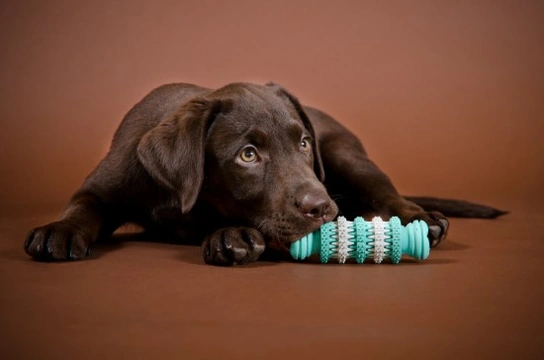
Puppy chewing - Do’s and don’ts for managing things
All puppies of every breed and type chew, and this is a totally natural part of growing up! Puppies need to chew to break their new teeth through the gums and relieve the associated teething pain that comes with it, and pups and young dogs also explore the world with their mouths. Chewing and mouthing provide feedback on taste, texture and their environment, and also act as a soothing behaviour that can help to keep your pup calm and happy.
However, puppy chewing, while natural, can also prove to be a problem if they are chewing inappropriate things; this can both damage your possessions, and potentially prove harmful to your pup if they chew on something that is dangerous to them. Added to this, some pups don’t make the distinction between chewing on inanimate objects and chewing on your own hands and feet, and puppy teeth, while small, can be needle-sharp!
In this article, we will look at managing puppy chewing, and some of the do’s and don’ts of getting through the chewing stage of development. Read on to learn more.
Things you should do
- Remember that teething and ergo, chewing are totally natural, and you should not try to stop or curb your pup from doing these things! It is important to allow your pup adequate outlets for their need to chew, and not to tell your pup off for doing what comes naturally.
- You should ensure that you provide a good range of toys that your pup has freely available to chew all the time, and that these are safe and appropriate for them.
- Try to ensure that your pup has access to a range of different shapes, textures and materials to chew, and is not limited to just one or two things. A teething Kong toy is a great choice to start off with, as these are sturdy and strong, and very satisfying to bite on!
- If your pup is apt to chew on anything and everything, including things that they should not get their teeth into, keep temptation out of their way as much as possible. This means keeping things like shoes and kid’s toys up off the floor, and possibly, restricting your dog to one puppy-proofed room when you are out.
- Use positive reinforcement when it comes to keeping your pup from chewing on the wrong thing; encourage them with toys that they are allowed to have, and use treats and tasty pastes to make things more appealing to your dog.
- Redirect your dog’s attention from the things that they should not be chewing on; don’t take something from them without offering them an alternative, and praise them warmly when they accept your replacement.
- Make sure that your whole family knows what your pup can and cannot chew on, and will not sabotage your efforts by offering your pup something bad, or by not stopping them from chewing on something you have previously told your dog that they cannot have!
- Start teaching your pup the command to “leave it!” from an early age, as this will make it easier for you to rescue things that should not be chewed!
Things you should not do
- Don’t punish your dog for chewing on things, as this will prove confusing to them, being as they are unable to make the distinction between what is theirs and what is not.
- Do not allow your dog to chew something one day then forbid it the next; you must remain consistent, and have rules in place for what is and is not ok.
- Do not fight your dog over something that they have in their mouth; this will confuse your dog, and turn things into a game for them, rather than encouraging them to give something up to you. Work with positive reinforcement and diversion to get your property back when needed!
- Don’t let your puppy chew on you; it can seem cute and adorable, but chewing on people is a bad habit, as well as potentially painful! If your pup is not taught that chewing on people is bad when they are young, they are apt to continue doing this when they get older!
- Don’t remove chew toys from your dog as a punishment; remember that chewing, particularly when teething, is a normal and necessary process, and should not be forbidden.
- Don’t let your pup get into the habit of chewing on their lead, as this will make walking and training harder later on. If your pup loves to have something in their mouths, give them a toy to carry when out walking rather than leaving them looking for something to grasp hold of!
- Don’t buy cheap or flimsy chew toys, or give your pup kid’s toys or things that were not designed for dogs; these things may be dangerous and have small parts that can be ingested. For this same reason, do not encourage your dog to chew on sticks and twigs.



